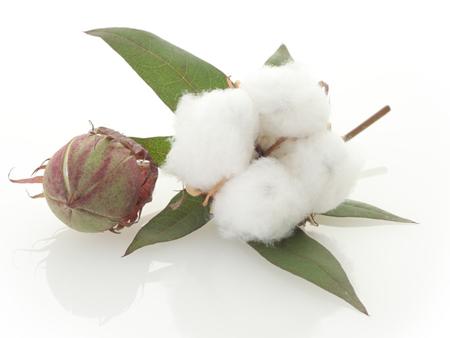Ribs Fabric,Stretch Knit Fabric,Stretchy Rib Shirt Neck Collar Fabric,Excellent Elasticity Rib Fabric Zhejiang Shaoxing Yongda Knitting & Art of Work Co., Ltd , https://www.ssfwfabrics.com Since the beginning of the year, the total position of Zheng cotton has been growing. With the withdrawal of the purchasing and storage policy, the cotton market will enter into marketization, which will increase the volatility. The market has a good expectation for the future vitality of Zheng cotton, and the long-sleeping Zheng cotton will be “awakenedâ€.
Since the beginning of the year, the total position of Zheng cotton has been growing. With the withdrawal of the purchasing and storage policy, the cotton market will enter into marketization, which will increase the volatility. The market has a good expectation for the future vitality of Zheng cotton, and the long-sleeping Zheng cotton will be “awakenedâ€.
Withdrawal of the purchasing and storage policy, the cotton price will go to a market-oriented country and open storage for three consecutive years, which will make the domestic market out of touch with the international market, and the Zheng cotton market will lose its vitality. At the end of March 2014, the 2013 cotton collection and storage work will be completed. In 2014, the country will implement direct subsidies in Xinjiang. Changes in the policies will change the pattern of the cotton market. First, the iron and steel price of the storage and storage price will be lost. The cotton price will be The return to the market will ultimately be determined by the supply and demand game. Second, the domestic and foreign cotton spreads will return. The spread has been maintained at more than 3,000 yuan/ton since 2012, and the highest even exceeds 5,000 yuan/ton. In the context of global integration, this is serious. Departure from the law of value. Performance in the ** market is an increase in the factors affecting the price of futures. Any factors that affect the economic situation, market sentiment, and supply and demand will affect the futures price. Undoubtedly, the vitality of the cotton industry will increase, and cotton industry customers and investment funds will increase. Reenter the court.
In the destocking environment, throwing reserve prices into new pressures has opened up the acquisition for three consecutive years, which has caused the State Reserve Bank to become overwhelmed with cotton. In 2011, it collected and stored approximately 3.25 million tons at a price of 19,800 yuan/ton for 2012. A total of approximately 6.5 million tons was collected and stored at a price of RMB 20,400 per ton. Although the 2013 purchase and storage have not been completed, it is expected that the total reserves will exceed 6.3 million tons. As a result, total reserves exceeded 16 million tons. In the meantime, the amount of dumped storage (as of now) is about 4.8 million tons. A simple calculation found that the net warehousing amount exceeded 11 million tons. Coupled with the original inventory of the State Reserve and imported cotton purchased by the country each year, the existing reserve of cotton in the State Reserve is close to the domestic consumption of two years.
The storage capacity and financial pressure brought by reserve cotton are also one of the important reasons why the country no longer continues to open up its storage and storage. Relevant departments have indicated that in the coming years, destocking will dominate. In 2014, the country will continue to strictly control the issuance of import quotas, and the market gap will be borne by the state reserve cotton. Therefore, the reserve cotton supply price will become an important pressure on the market. At present, the country is placing cotton on the market at a bid price of 18,000 yuan/ton. Demand companies only bid on-demand, and the transaction is normal. After the listing of Xinmian, the price center of gravity was further lowered, and it was difficult to place the reserve price at 18,000 yuan/ton. The current market has been rumored that the latter will reduce the throwing of storage prices, and with the import quota.
Under the market mechanism, the cotton price may be equal to the production cost. The global cotton supply is loose, the inventory consumption ratio hits a record high, and the state reserves are high. Under such a bad environment, the domestic cotton price may directly fall to the production cost line, or even lower. . The author roughly estimates that last year the contracting households in Xinjiang had a planting cost of 2,300 yuan/mu. Based on an average yield of 600 kg, an average of 39%, and a processing cost of 900 yuan/ton, the production cost of lint is about 11,000 yuan/ton. In other words, if the price is not good, the price of cotton may fall to 11,000 yuan/ton. Of course, this is the worst estimate. However, this also illustrates the problem that, under the market mechanism, the volatility of cotton prices will increase. In the above, we expect that the cotton price in 2014 will be difficult to exceed 18,000 yuan/ton, and the volatility of cotton price will be 7,000 yuan/ton.
To sum up, changes in the wind direction of the national policy in the new year will inevitably lead to an increase in the volatility of the cotton price. Zheng Momian, who has been quiet for a long time, will “revive†it. From the perspective of huge domestic inventory and weak demand, the price of cotton tends to fall and it is difficult to rise. Cotton processing companies must pay close attention to the opportunities for the subsequent sale of hedging.